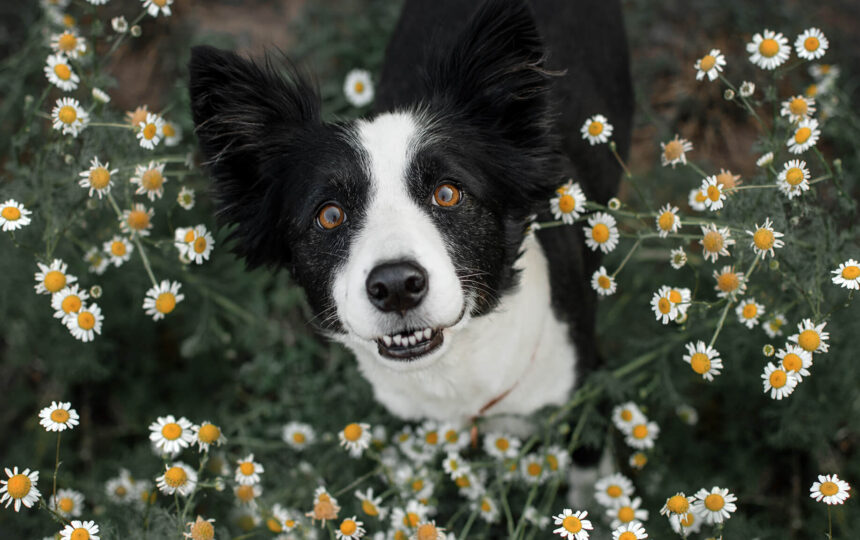Are you a plant-loving pet parent? If so, you must be extra careful about bringing plants into your home and what you plant in your yard and garden.
Plants are powerful and often enticing to dogs and cats – especially young dogs and extra curious kitties. Unfortunately, the toxic nature of many plants poses a threat to your furry friends that can be avoided if you know which plants to pass up.
In this article, we unpack some of the most popular yet dangerous houseplants and landscape options. Please note this list is not exhaustive. You must research before introducing a new plant into your pet’s environment.
Common indoor plants to avoid with pets
Philodendron (Monstera deliciosa)
Popular amongst many houseplant lovers, philodendron is not only dangerous if ingested, but just rubbing on the leaves may bring about a rash. If your pets happen to eat the leaves of this plant, they could experience oral irritation, mouth swelling, vomiting, and compromised swallowing.
Cyclamen (Cyclamen spp.)
These plants are popular house gifts with pretty red, white, or pink flowers. But don’t let the beauty of this petite and unassuming plant fool you – it is dangerous to dogs and cats. Terpenoid saponins are to blame for this plant’s toxicity, and all parts of the plant contain them – especially the roots. Symptoms of mild toxicity include drooling, vomiting, diarrhea, and loss of appetite. If your pet ingests a large piece of tuber, it might experience seizures, abnormal heartbeat, or death.
Amaryllis (Amaryllis spp.)
Popular around the holiday, this pretty bulbous plant contains lycorine, which may cause vomiting, diarrhea, tremors, and drooling if ingested. Cats are especially sensitive to all parts of this plant. Easter lilies are also in the same family and are as toxic as amaryllis.
Snake plant (Dracaena trifasciata)
Snake plants are a popular choice amongst new plant parents because they are easy to keep and require little attention. Unfortunately, they contain saponins – as part of their natural defense arsenal from pests, bacteria, and fungi. Sapions are toxic to dogs and cats and can cause gastrointestinal distress, vomiting, and diarrhea.
English ivy (Hedera spp.)
This low-light-loving houseplant contains hederagenin. If dogs or cats nibble the leaves of this plant, it may cause gastrointestinal issues such as vomiting, pain, and excessive salivation. Additionally, if your pet comes in contact with this plant, it may cause a rash.
Spider plant (Chlorophytum comosum)
Cats can’t resist this whimsical plant often displayed in a hanging basket. Although not officially labeled toxic, this plant is in the same family as opium and can cause gut issues like vomiting and diarrhea in cats.
Pothos (Epipremnum aureum)
Hand’s down, pothos has to be the easiest houseplant to grow. Its beautifully thick and waxy leaves are deceiving as they contain the toxic substance oxalate crystals, which can cause pain, swelling, and burning in the mouth, tongue, and throat. Sap from this plant may cause contact dermatitis and irritate eyes.
Kalanchoe (K. blossfeldiana)
Even though this perennial tropical succulent has gorgeous flowers, it’s not one you want to bring into a home with pets. The blossoms contain bufadienolides, a substance that causes issues for the tummy, like diarrhea and vomiting. Ingestion of the flower may also cause arrhythmia in some animals.
Jade plant (Crassula ovata )
All members of the jade plant family – all 1500 of them – are toxic to dogs and cats. Below the surface of the striking waxy leaves of this tropical succulent is a poisonous compound that can cause various symptoms, including vomiting, seizures, and breathing problems. Pet owners best pass it up no matter how appealing this pretty plant may be.
Common outdoor plants to avoid with pets
Azalea (Rhododendron spp)
Azalea plants are known for lighting up any space and bringing beautiful color to the landscape. Sadly, these beauties have a dark side – a potent neurotoxin known as grayanotoxin. It only takes a small amount of this poison to cause disastrous impacts. Signs of poisoning include vomiting, diarrhea, excessive drooling, weakness, heart rate or rhythm problems, fatigue, heart failure, tremors, blindness, seizures, and death.
Caladium (Caladium spp.)
Caladiums are plants with beautiful heart-shaped foliage often found in shady outdoor locations and inside as potted plants. All parts of this plant are hazardous to pets because of the compound calcium oxalate. Crystals in this compound leech into the tissues of your dog’s skin and mouth and cause injury. Immediate symptoms include swelling, excessive drooling, and difficulty swallowing. A severe toxic reaction can be lethal.
Oleander (Nerium oleander)
This landscape flowering plant is popular in the southern regions and is easy to grow but not pet friendly. Oleanders contain a cardiac glycoside known as oleandrin. Every part of this plant poses a threat to pets, and it only takes a little bit to cause sickness. There have even been reports of dogs becoming gravely ill after drinking water with an oleander leaf. The impacts of this plant include excessive salivation, abdominal pain, diarrhea, weakness, abnormal heart rate, depression, and death.
Sago palm (Cycas revoluta)
Sago palms are found in warmer regions of the country and are favored for their short rounding habit. Unfortunately, they are incredibly toxic to pets. All parts of the plant contain cycasin, an extremely poisonous substance that can cause serious damage to their organs and even death. The most common symptoms of poisoning by a sago palm include vomiting, bloody diarrhea, seizures, depression, and jaundice.
Foxglove (Digitalis purpurea)
This perennial plant with eye-catching trumpet-shaped flowers is native to many parts of the country and highly toxic to pets. All parts contain cardiac glycoside toxins that may cause weakness, drooling, nausea, tremors, seizures, arrhythmia, slowed pulse, and death.
Hydrangea (Hydrangea arborescens)
Large beautiful blooms make this familiar landscape woody shrub easy to spot. Although you may be tempted to plant these in your yard, you will want to think twice if you have pets. If any part of the plant is ingested, it could cause vomiting, diarrhea, stomach pain, difficulty breathing, extremity stiffness, depression, seizures, and coma.
Iris (Iris germanica)
The elegant iris is a mainstay in many gardens. You may know them as bearded iris, yellow flag, or snake lilly. Yes, iris plants are highly dangerous to dogs and cats. Irisin is a toxic compound concentrated in bulbs and underground stems. If your dog is a digger -watch out. Munching on the leaves can cause vomiting, diarrhea, fatigue, and excessive saliva.
A note about fruit plants
Many fruit plants, including grapefruit, oranges, lemons, apples, apricots, cherries, peaches, and plums, contain toxic compounds which can cause breathing difficulty, dilated pupils, and shock.
Avocados contain a fungicidal toxin called persin. This compound is oil-soluble, structurally like a fatty acid, and leaches into the body, causing vomiting and diarrhea.
Did you know that grapes and raisins are highly toxic to your pets? If your furry friends consume them, they can develop acute kidney injury.
What to do if you suspect a plant has poisoned your pet
Because plant poisoning can go from bad to worse rather quickly, it is always good to seek emergency medical advice and care for your pet if you suspect your furry friend has gotten into a dangerous plant. Watch for sudden changes in behavior, diarrhea, vomiting, lethargy, and shortness of breath.
Call your veterinarian immediately or a pet poison hotline like Pet Poison Helpline or ASPCA Animal Poison Control. They can help walk you through the immediate action needed to help your pet.
Most importantly, when choosing indoor and outdoor plants, be sure to research their potential impacts on your furry friends. Choose pet-safe plants and be aware of your pet’s environment and whereabouts.






